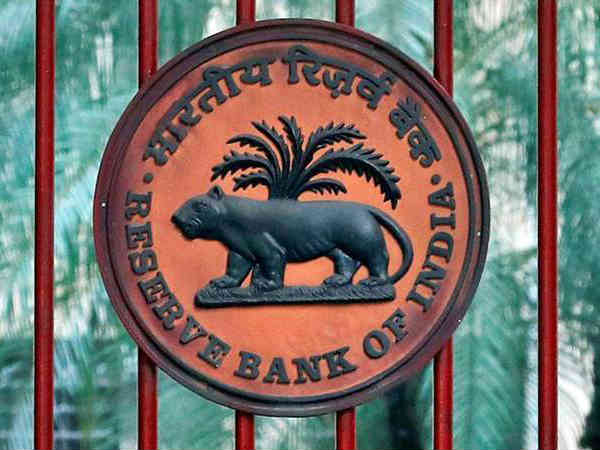DA, DR restoration benefits for central government employees and pensioners
Dearness Allowance (DA) and Dearness Relief (DR) benefits for central government employees and pensioners are likely to be reinstated by the central government in September 2021, as instructed by the 7th pay commission. Following a recent discussion between the Ministry of Finance and the DoPT (Department of Personnel and Training) chaired by the Cabinet Secretary of India, it has been announced that the 7th CPC DA and 7th CPC DR would be reintroduced in September 2021. For the pending DA and DR, Shiva Gopal Mishra, Secretary, Staff Side at the National Council of JCM, declared that the Ministry of Finance will file a memo to the government for the restoration of these benefits, which would result in a jump in the 7th CPC salary.
House Building Advance (HBA) benefit for central government employees
In order to enable central government employees to construct their dream house, the central government introduced the House Building Advance (HBA) incentive to all central government employees in June 2020. The standard interest rate for this HBA is 7.9%, and the HBA benefit will be valid until March 31, 2022. The House Building Advance for central government personnel will be granted from October 1, 2020, to March 31, 2022, which implies that central government servants (CGS) who have benefited from the HBA from October 1, 2020 will be eligible for this measure.
Time limit for submission of Travelling Allowance (TA)
The Central Government has extended the deadline for submitting Travel Allowance (TA) claims from 60 to 180 days. The proposal to modify the time frame for submitting TAs after retirement took effect on June 15, 2021. This proposal was made prior to the hike in the Dearness Allowance (DA) and Dearness Relief (DR) for central government employees and retirees or pensioners. The official memorandum issued by the Ministry of Finance and Department of Expenditure also states that “the time limit for submission of claims for TA on Tour/Transfer/Training/ Journey on Retirement was changed from one year to sixty days, succeeding the date of completion of the journey.” It further added that “Several references have been received in this Department regarding extension of time-limit for submission of TA claims in r/o journeys performed by retired employees and their families for going to Hometown/place of settlement after retirement as difficulties are being faced by the retired Govt. officials while claiming reimbursement of TA on retirement within a period of sixty days of completion of their journey.”
Pensioners will get pension slips via WhatsApp, Mail & SMS
The central government has instructed pension disbursing banks to issue pension slips to pensioners in order to facilitate ‘Ease of Living’ for over 60 lakh retirees. Since July 1, 2021, this initiative has been in action. According to the official memorandum issued by the Ministry of Personnel, Public Grievances and Pensions and Department of Pension and Pensioners’ Welfare, it is confirmed that “Pension Disbursing Banks to issue pension slip to pensioners after the credit of pension on their registered mobile numbers through SMS and email (wherever available) also. Banks may also use social media apps WhatsApp etc in addition to SMS and email. The pension slip should provide complete details of monthly pension paid along with a break-up of the amount credited and tax deductions etc. if any. The CPPCs of Pension Disbursing Banks are requested to ensure compliance with the above instructions for improving the “Ease of Living” for pensioners.”
Changes in family pension rules for central government employees
The central government has streamlined the family pension regulations for central government employees in light of the fatal Covid-19 epidemic. Union Minister Dr. Jitendraa Singh announced modifications in regulations made by the Department of Pension & Pensioners Welfare (DoP&PW), saying that under the new rule, provisional family pensions will be granted promptly upon confirmation of a claim for Family Pension and a Death Certificate from an eligible family member, without the need to complete any other procedures. The DoPPW has instructed banks to only ask for the basic details from family pension applicants in order to avoid bothering pension claimants. According to the DoPT letter, details about family members other than the Applicant is irrelevant to the bank’s decision to begin a family pension. As a result, banks should not ask the applicant for such information under any conditions.
Pension benefits under NPS
According to rule 10 of the CCS (Implementation of NPS) Rules, 2021, central government workers enrolled by the National Pension System now have the option of receiving benefits from the previous pension plan or the accumulated pension fund under NPS if they die while working. This provision, however, is not available to the heirs of the deceased government employee. If a central employee does not accept this option, the old pension scheme income will be automatically accessible for the initial 15 years of employment. Following that, he or she will have the choice of using the default NPS. According to the Ministry of Health and Family Welfare’s Department of Health and Family Welfare’s memorandum, “In this regard, it is stated that as per Rule 10 of CCS (Implementation of NPS) Rules, 2021, Government Servant covered under NPS, at the time of joining service, exercise an option in Form I for availing benefits under the NPS or under the CCS (Pension) Rules, 1972 or the CCS (Extraordinary Pension), Rules, 1939 in case of his death or discharge on invalidation or disability of Government Servant/subscriber during service. Further, those who are already in Government Service and are covered by the NPS shall also exercise such an option as soon as possible after the notification of these rules. They also need to furnish the details of family in Form 2 to the Head of Office along with Form 1 for record and onward submission to Central Record Keeping Agency.”
Increase in limit for medical reimbursement for central government employees
The maximum reimbursement for medical claims filed by Navodaya Vidyalaya School (NVS) principals would be increased, according to the central government. A memorandum on the subject was previously released by the Department of School Education and Literacy. The Department of School Education and Literacy of the Ministry of Education issued a circular in this regard, stating that the central government has increased the annual medical reimbursement claim limit for NVS Principals. According to the circular, the previous ceiling of Rs 5,000 for an NBS Principal has been increased to Rs 25,000 if the medication was administered at a Government or CGHS-approved center. When employees undergo hospitalization in a government hospital or a center controlled by the central government, they will be eligible for this benefit.
Relaxation for children education allowance claim rule for central government employees
The Department of Personnel and Training (DoPT) has relaxed the Children Education Allowance (CEA) claim guidelines for Central Government employees in advance of the expected Dearness Allowance rise in September 2021. Central government workers earn Rs 2250 per month in lieu of CEA, according to the 7th Pay Commission’s norms. Because of the current Covid-19 pandemic and resulting lockdowns, Central Government employees were having difficulties receiving CEA because their children’s results/report cards were not provided through SMS/email by institutions. In an official memorandum, the Department of Personnel and Training (DoPT) said that “This Department has been receiving several references/ queries from Central Government employees stating that in the prevailing pandemic situation, result/report cards were not sent to the parents by the School through SMS / email, and fee is also being deposited online, and the parents are having difficulty in claiming CEA.” The DoPT further claimed that “The matter has been considered and it has been decided that in relaxation of para 2(b) of this Department’s OM No.A-27012/02/2017- Estt.(AL) dated 17th July, 2018, the CEA claims may also be considered through a self-certification made from the concerned employees or through printout of e-mail/SMS of result/report card/fee payment, in addition to the prescribed modes of claims only for the academic years ending March, 2020 and March, 2021.”











